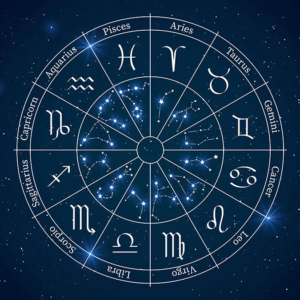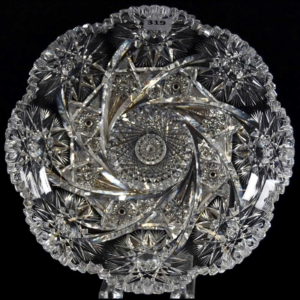Pallasite stone – properties, virtues & benefits
Pallasite Stone is a rare and fascinating meteorite composed of olivine crystals set in a nickel-iron matrix. Its natural beauty makes it a popular and sought-after collector’s item for meteorite enthusiasts and gem lovers alike. Discover the origins and unique characteristics of Pallasite Stone.
PALLASITE CHARACTERISTICS
- Chakra: /
- Properties: Natural beauty, rarity, olivine and nickel-iron crystal composition, collectible Piece.
- Astrology: /
- Zodiac: /
- Elements: Nickel, iron, magnesium, silicon, oxygen.
- Colors: Olive green and metallic.
- Hardness: 5 to 6 on the Mohs scale.
- Chemical Formula: (Mg, Fe)2SiO4 + Fe, Ni.
- Associated god: None.
PALLASITE – ITS HISTORY
Meteorites are solid elements that come from various stars, such as planets, natural satellites or planetoids. They are found in space, on various stars such as the Earth, Mars, the Moon and JuPiter, and are actually asteroid debris or fragments from the collision between two stars. A meteorite varies in size and weight as it enters the upper atmosphere, but passes through space and the atmospheric envelope unchanged. On its descent, it disintegrates and loses much of its mass, leaving only 1% to 1‰ of its original size and weight on impact.
The rock penetrates the atmospheric envelope at a speed of several tens of kilometers per second, causing a luminous trail known as a meteor or “shooting star” at night and “bolide” during the day. The “bolide” corresponds to a large meteoroid, and the light trail generally ceases to shine at around 20 km above ground.
When rock passes into the troposphere, two scenarios can occur: either the rock does not disintegrate and becomes a “meteorite”, or it fragments in mid-air, which can be caused by thermal shock or collision with the ground. In the latter case, the scattering field takes on a shape depending on the place of fragmentation.
Meteorologists and meteorite hunters classify these rocks from elsewhere into two distinct categories: those whose fall has been observed and those discovered by chance. Every year, the “Meteoritical Society” publishes a list of analyzed meteorite rocks, which reached around 60,000 rocks in 2018 and increases by around 1,500 each year.
PALLASITE STONE – ITS ORIGIN AND COMPOSITION
Rocks from space are the result of fragmentations caused by a collision between two stars or disintegration during the passage of a comet near the sun. In 1958, the International Astronomical Union gave these rocks a name and an academic definition:
- A meteorite is a fragment of meteoroid that has remained intact during its passage through the atmosphere and at the moment of impact.
- A meteoroid is an object smaller than an asteroid but larger than an atom that moves through interstellar space.
In 1995, the Royal Astronomical Society specified that the size of a meteoroid is between 100 µm and 10 m. Below 100 µm, it is called interplanetary dust, because its low mass cannot generate a shooting star. Above 10 m, it’s a near-Earth object whose mass is sufficient to reflect light, and which can be seen through a telescope.
.
A NEO with a diameter greater than 2 km could cause unprecedented climate change and biological crisis on Earth if it collided with it. However, the Royal Astronomical Society has constantly adapted the limits in line with technological and scientific advances, not least thanks to the power of the telescopes in the US optical monitoring network, which today enable stars smaller than 10 m to be observed. As a result, the lower and upper limits of star size are regularly revised.
Meteorite rock hunters have advanced a new definition of meteorite thanks to the discovery of shards from Mars and the Moon and the power of observational instruments. According to this new definition, a meteorite is an element coming from a celestial body that has escaped the gravitational attraction of its parent body and crossed paths with a natural or artificial body larger than itself. It has then reached the surface of this celestial body without volatilizing entirely, although it has undergone some alterations during atmospheric passage. It therefore retains its initial structure and minerals, unless it aggregates with a rock of greater mass.
.
A meteoroid, on the other hand, moves through interplanetary space and measures between 10 µm and 1 m as a celestial body or fragment. Between 100 µm and 2 mm, it’s called a micrometeorite or micrometeoroid. The names of these rocks from outer space depend on where they were found, and if several have been found in the same place, they will be distinguished by a letter or a number. For example, Black Beauty is a Martian meteorite rock with the official name NWA 7034.

PALLASITE STONE – VERTIES AND PROPERTIES
Pallasite is a meteorite containing olivine crystals embedded in a ferronickel metal matrix. Thanks to this composition, it is endowed with a very powerful magnetism, similar to that of magnetite. This great magnetic force of pallasite can help achieve goals, both psychologically and physically.
PALLASITY ON THE PSYCHOLOGICAL LEVEL
Pallasite can offer us protection from outside influences and help harmonize and balance our emotions, making it useful on a psychological level. It is particularly recommended for those seeking to develop willpower and perseverance. Due to its extraterrestrial origin, all varieties of pallasite can be used for meditation, enabling practitioners to refocus their energy and connect to the birth of the universe and the Big Bang.
PHYSICAL PALLASITY
Pallasite is a stone much appreciated in lithotherapy for its ability to materialize positive energy. It’s worth remembering that meteorite stones were subjected to extreme temperatures when they entered our atmosphere, giving them many qualities and benefits. On a physical level, pallasite facilitates the body’s assimilation of minerals such as iron, boosts the immune system and helps combat cold snaps. To reap its benefits, simply wear it as a pendant near the heart, for example.

PALLASITE STONE – CLEAN AND RECHARGE
Cleaning and recharging Pallasite Stone can help maintain its natural beauty and energetic properties. Here are a few steps to follow:
Cleaning:
- Gently clean the Pallasite Stone with a soft, damp cloth to remove dirt and dust.
- Avoid using harsh chemicals or solvents that could damage the stone surface.
Loading:
- Place the Pallasite Stone under direct sunlight for a few hours to recharge.
- You can also place it on an amethyst or quartz bed to recharge and purify.
It is important to note that Pallasite Stone is not associated with specific energetic properties, as it is mainly appreciated for its natural beauty and rarity.
WHERE DOES THE NAME PALLASITE COME FROM?
The name “pallasite” was given in honor of the famous German naturalist Peter Simon Pallas, who was the first scientist to describe this family of meteorites in 1772. Pallasites were first discovered in Siberia, Russia, where Pallas had led scientific expeditions. Thus, the name “pallasite” was chosen to honor Pallas in recognition of his contributions to science and the discovery of this class of meteorites.
WHICH CHAKRA DOES PALLASITE ACT ON?
There is no chakra specifically associated with Pallasite Stone. The olivine crystals that make up Pallasite Stone are often associated with the heart chakra because of their green color, but this doesn’t necessarily apply to Pallasite Stone as a whole. However, it’s worth noting that Pallasite Stone is valued primarily for its natural beauty and rarity, rather than for its energetic properties or ability to act on the chakras. If you’re looking for stones that work with specific chakras, there are many other options available depending on your needs and preferences.
WHICH ASTROLOGICAL SIGN IS ASSOCIATED WITH PALLASITE?
There is no astrological sign specifically associated with Pallasite Stone. Unlike some gemstones and crystals, Pallasite Stone is not generally associated with specific energetic properties or astrological effects. It is mainly appreciated for its natural beauty and rarity, rather than for its sPiritual or esoteric properties. However, if you are interested in stones and crystals associated with your astrological sign, there are many other options available depending on your sign and personal needs.
PALLASITE STONE SUMMARY
Pallasite stone is a rare type of meteorite that is composed of olivine and metal crystals. It takes its name from German mineralogist Peter Simon Pallas, who discovered it in Siberia in 1749. Pallasite stones are often considered among the most beautiful of meteorites, due to their unique combination of colorful crystals and shiny metal. Pallasite stones are thought to have formed at the boundary between the core and mantle of a planet or asteroid, where conditions of high temperature and pressure allowed olivine and metal to crystallize together. Scientists study pallasite stones to better understand the formation and evolution of celestial bodies in our solar system.

